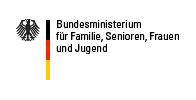Background and development
Background and Development
Gender Budgeting came into existence in the international context of economic globalization. Commonwealth countries were the first to take steps to put Gender Budgeting into practice.
This approach has been the initial reaction of gender equality policy to the accompanying restructuring and prescribed structural adjustment programs, specifically to the associated reduction in state tasks. The privatization of tasks took place in two regards, one part of these tasks being put in the hands of the market-oriented service industry and another part being left to the private sphere as unpaid work.
As women still do the greater part of the private unpaid work of looking after the home, this shifting of tasks falls on them as an additional burden or else the tasks cannot be performed any more at all, which as a rule has significant negative consequences for families and for society as a whole.
The point of departure for Gender Budgeting was therefore an economically-grounded criticism of certain measures of economic policy and their negative impact on women in the employment market, family policy and social policy. As the economic policy decisions mentioned above were as a rule associated with large-scale restructuring of public budgets, gender equality-oriented analysis was extended to public budgets. This took into consideration both the revenue side (especially taxation policy, but also other levies) and the expenditure side (expenditure on staff, benefit legislation, or grants a under programs and projects).
The macro-economic or national economy dimension of a gender-oriented resources analysis and gender equality-oriented control is only marginally mentioned, if at all, in several current definitions of Gender Budgeting.
The limitation frequently found of GB to a gender-related analysis and gender equality-oriented shaping of public budgets is as a rule the fault of the logic of the respective political policy context. These can be seen, for example, in the European Parliament’s Resolution on Gender Budgeting (P5_TA (2003)0323). The definition given there includes the following:
“Gender budgeting [is] the application of gender mainstreaming in the budgetary process and, as such, places emphasis on the analysis of the impact of public policies on women and men, incorporates the gender perspective at all levels of the process of building public budgets and aims at restructuring revenues and expenditures in order to promote gender equality.“
In the same Resolution, “[the European Parliament] stresses the fact that macro-economic policy can contribute to narrowing or widening gender gaps in terms of economic resources and power, education and training and health,” and thus includes the macro-economic perspective of all policy decisions.
The aim of this Resolution was not to exclude macro-economic issues from systematic gender-related analysis and from evaluation in terms of gender equality policy, but rather to incorporate this hitherto neglected area of budgetary policy into this systematic analysis and evaluation. It should here be remembered that the EU is already very active in assessing national economic issues in terms of gender equality policy (European Employment Strategy and European Social Fund).
This approach has been the initial reaction of gender equality policy to the accompanying restructuring and prescribed structural adjustment programs, specifically to the associated reduction in state tasks. The privatization of tasks took place in two regards, one part of these tasks being put in the hands of the market-oriented service industry and another part being left to the private sphere as unpaid work.
As women still do the greater part of the private unpaid work of looking after the home, this shifting of tasks falls on them as an additional burden or else the tasks cannot be performed any more at all, which as a rule has significant negative consequences for families and for society as a whole.
The point of departure for Gender Budgeting was therefore an economically-grounded criticism of certain measures of economic policy and their negative impact on women in the employment market, family policy and social policy. As the economic policy decisions mentioned above were as a rule associated with large-scale restructuring of public budgets, gender equality-oriented analysis was extended to public budgets. This took into consideration both the revenue side (especially taxation policy, but also other levies) and the expenditure side (expenditure on staff, benefit legislation, or grants a under programs and projects).
The macro-economic or national economy dimension of a gender-oriented resources analysis and gender equality-oriented control is only marginally mentioned, if at all, in several current definitions of Gender Budgeting.
The limitation frequently found of GB to a gender-related analysis and gender equality-oriented shaping of public budgets is as a rule the fault of the logic of the respective political policy context. These can be seen, for example, in the European Parliament’s Resolution on Gender Budgeting (P5_TA (2003)0323). The definition given there includes the following:
“Gender budgeting [is] the application of gender mainstreaming in the budgetary process and, as such, places emphasis on the analysis of the impact of public policies on women and men, incorporates the gender perspective at all levels of the process of building public budgets and aims at restructuring revenues and expenditures in order to promote gender equality.“
In the same Resolution, “[the European Parliament] stresses the fact that macro-economic policy can contribute to narrowing or widening gender gaps in terms of economic resources and power, education and training and health,” and thus includes the macro-economic perspective of all policy decisions.
The aim of this Resolution was not to exclude macro-economic issues from systematic gender-related analysis and from evaluation in terms of gender equality policy, but rather to incorporate this hitherto neglected area of budgetary policy into this systematic analysis and evaluation. It should here be remembered that the EU is already very active in assessing national economic issues in terms of gender equality policy (European Employment Strategy and European Social Fund).
erstellt von Administrator
—
zuletzt verändert:
02.01.2010 20:07





